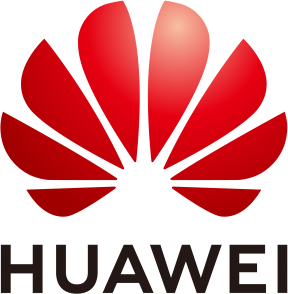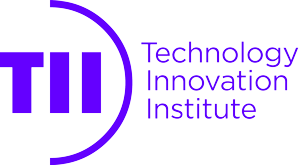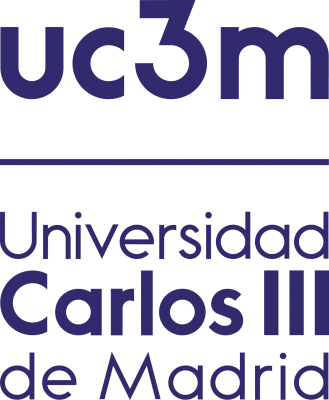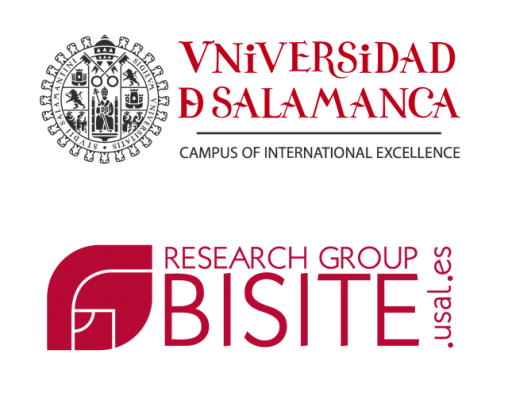Andrea J. Goldsmith, Professor, Princeton University (8 Dec, 16:30 CET)
Title: New Paradigms for 6G Wireless Communications
Peiying Zhu, Senior Vice President of Wireless Research, Huawei (8 Dec, 17:15 CET)
Title: 6G: The Next Frontier - From Connected People, Connected Things to Connected Intelligence
Sergio Parolari, Standards Manager, ZTE Corporation (9 Dec, 16:00 CET)
Title: 5G advanced for a smart society: vertical applications and solutions
Asha Keddy, Corporate Vice President and General Manager, Intel Corporation (9 Dec, 16:45 CET)
Title: 5G and Beyond: Enabling a Fully Connected, Mobile, and Intelligent Society over the Next Decade
Andreas Molisch, Professor, University of Southern California (9 Dec, 17:30 CET)
Title: Sub-THz Channels and Communications Systems for 6G
Radia Perlman, Fellow at Dell EMC (10 Dec, 16:00 CET)
Title: How to Build an Insecure System Using Perfectly Good Cryptography
Ananthapadmanabhan Kandhadai, Qualcomm Technologies Inc. (10 Dec, 16:45 CET)
Title: Making AR ubiquitous: Systems-level optimizations for always-on, always-connected experiences
Andrea J. Goldsmith, Professor, Princeton University
Title: New Paradigms for 6G Wireless Communications
Abstract: As 5G takes to the airwaves, we now turn our imagination to the next generation of wireless technology. The promise of this technology has created an international race to innovate, with significant investment by government as well as industry. And much innovation is needed as 6G aspires to not only support significantly higher data rates than 5G, up to 100 Gbps, but also improved reliability along with excellent coverage indoors and out, including for underserved areas. New architectures including edge computing must be designed to drastically enhance efficient resource allocation while also reducing latency for real-time control. Breakthrough energy-efficiency architectures, algorithms and hardware will be needed so that wireless devices can be powered by tiny batteries, energy-harvesting, or over-the-air power transfer. There are many technical challenges that must be overcome in order to make this vision a reality. This talk will describe what the wireless future might look like along with some of the innovations and breakthroughs required to realize this vision.
 Bio: Andrea Goldsmith is the Dean of Engineering and Applied Science and the Arthur LeGrand Doty Professor of Electrical Engineering at Princeton University. She was previously the Stephen Harris Professor of Engineering and Professor of Electrical Engineering at Stanford University, where she is now Harris Professor Emerita. Her research interests are in information theory, communication theory, and signal processing, and their application to wireless communications, interconnected systems, and neuroscience. She founded and served as Chief Technical Officer of Plume WiFi (formerly Accelera, Inc.) and of Quantenna (QTNA), Inc, and she serves on the Board of Directors for Intel (INTC), Medtronic (MDT) and Crown Castle Inc (CCI). Dr. Goldsmith is a member of the National Academy of Engineering and the American Academy of Arts and Sciences. She is a Fellow of the IEEE and of Stanford, and has received several awards for her work, including the Marconi Prize, the IEEE Sumner Technical Field Award, the ACM Athena Lecturer Award, the ComSoc Armstrong Technical Achievement Award, the Kirchmayer Graduate Teaching Award, the WICE Mentoring Award, and the Silicon Valley/San Jose Business Journal’s Women of Influence Award. She is author of the book ``Wireless Communications'' and co-author of the books ``MIMO Wireless Communications'' and “Principles of Cognitive Radio,” all published by Cambridge University Press, as well as an inventor on 29 patents. She received the B.S., M.S. and Ph.D. degrees in Electrical Engineering from U.C. Berkeley.
Bio: Andrea Goldsmith is the Dean of Engineering and Applied Science and the Arthur LeGrand Doty Professor of Electrical Engineering at Princeton University. She was previously the Stephen Harris Professor of Engineering and Professor of Electrical Engineering at Stanford University, where she is now Harris Professor Emerita. Her research interests are in information theory, communication theory, and signal processing, and their application to wireless communications, interconnected systems, and neuroscience. She founded and served as Chief Technical Officer of Plume WiFi (formerly Accelera, Inc.) and of Quantenna (QTNA), Inc, and she serves on the Board of Directors for Intel (INTC), Medtronic (MDT) and Crown Castle Inc (CCI). Dr. Goldsmith is a member of the National Academy of Engineering and the American Academy of Arts and Sciences. She is a Fellow of the IEEE and of Stanford, and has received several awards for her work, including the Marconi Prize, the IEEE Sumner Technical Field Award, the ACM Athena Lecturer Award, the ComSoc Armstrong Technical Achievement Award, the Kirchmayer Graduate Teaching Award, the WICE Mentoring Award, and the Silicon Valley/San Jose Business Journal’s Women of Influence Award. She is author of the book ``Wireless Communications'' and co-author of the books ``MIMO Wireless Communications'' and “Principles of Cognitive Radio,” all published by Cambridge University Press, as well as an inventor on 29 patents. She received the B.S., M.S. and Ph.D. degrees in Electrical Engineering from U.C. Berkeley.
Peiying Zhu, Senior Vice President of Wireless Research, Huawei
Title: 6G: The Next Frontier - From Connected People, Connected Things to Connected Intelligence
Abstract: 5G rollouts have stimulated new demand that cannot be met by 5G itself. That's where 5G-Advanced comes into play, delivering enhanced capabilities. Without a doubt, 5G-Advanced will further stimulate more new demands that only 6G can address. Looking into these new demands will be crucial to defining 6G. ITU-R is leading the consortium effort to study future technology trend (FTT) and 6G vision, aiming to issue the FTT report and vision recommendation by the end of 2022 and in the middle of 2023, respectively.
6G will go far beyond communications. 6G will serve as a distributed neural network that provides communication links to fuse the physical, cyber, and biological worlds, truly ushering in an era in which everything will be sensed, connected, and intelligent. In addition to connected people and things, we predict that 6G will be the platform for connected intelligence, where the mobile network connects vast amounts of intelligent devices and connects them intelligently.
This talk will first start with 5G-advanced as an introduction, then present an overall vision for 6G with drivers, use cases, KPIs, roadmap and key capabilities. Six key capabilities: (1) Extreme connectivity, (2) Native AI, (3) Networked sensing, (4) Integrated Non-terrestrial network, (5) Native trustworthiness and (6) Sustainability, will be further discussed, including potential technologies/research directions and associated challenges.
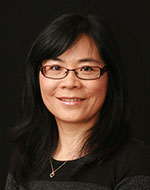 Bio: Dr. Peiying Zhu, Senior Vice President of Wireless Research, is a Huawei Fellow, IEEE Fellow and Fellow of Canadian Academy of Engineering. She is currently leading 5G and beyond wireless research and standardization in Huawei. The focus of her research is advanced radio access technologies. She is actively involved in 3GPP and IEEE 802 standards development. She has been regularly giving talks and panel discussions on 5G vision and enabling technologies. She led the team to contribute significantly to 5G technologies. Prior to joining Huawei in 2009, Peiying was a Nortel Fellow and Director of Advanced Wireless Access Technology in the Nortel Wireless Technology Lab. She led the team and pioneered research and prototyping on MIMO-OFDM and Multi-hop relay. Many of these technologies developed by the team have been adopted into LTE standards and 4G products. Dr. Zhu has more than 200 granted patents.
Bio: Dr. Peiying Zhu, Senior Vice President of Wireless Research, is a Huawei Fellow, IEEE Fellow and Fellow of Canadian Academy of Engineering. She is currently leading 5G and beyond wireless research and standardization in Huawei. The focus of her research is advanced radio access technologies. She is actively involved in 3GPP and IEEE 802 standards development. She has been regularly giving talks and panel discussions on 5G vision and enabling technologies. She led the team to contribute significantly to 5G technologies. Prior to joining Huawei in 2009, Peiying was a Nortel Fellow and Director of Advanced Wireless Access Technology in the Nortel Wireless Technology Lab. She led the team and pioneered research and prototyping on MIMO-OFDM and Multi-hop relay. Many of these technologies developed by the team have been adopted into LTE standards and 4G products. Dr. Zhu has more than 200 granted patents.
Sergio Parolari, Standards Manager, ZTE Corporation
Title: 5G advanced for a smart society: vertical applications and solutions
Abstract: 3GPP is finalizing Release 17 and starting to work on the second phase of 5G, which is officially named as 5G Advanced. The goal of 5G Advanced is to extend the 5G framework to support more scenarios and use cases, in particular for IoTs and vertical applications. Communications for automation and intelligence in vertical domains come with demanding and diverse requirements with respect to latency, data rates, availability, reliability, and in some cases, high-accuracy positioning. The vertical industries that will reap the benefits of this new level of automation will range from railways, buildings, manufacturing, healthcare, smart cities, electrical power supply and special events. Integrated with AI, Big Data, IoT, and other key technologies, 5G Advanced will empower traditional industries one step further than 5G.
The talk will demonstrate the latest status of 5G empowered vertical applications and provide insight on how 5G Advanced will digitalize and modernize traditional industries to raise the efficiency. AI, industrial IoT, ubiquitous networks, blockchains, edge computing and network slicing are the key technologies which will be elaborated in this talk. In the conclusion of this talk, evolving trends of 5G Advanced to better boost a smart society and better support verticals will also be outlined.
 Bio: Sergio Parolari is a Standards Manager in ZTE's Wireless Product Planning department. He represents ZTE in 3GPP RAN groups and he's currently serving as RAN WG2 Vice-Chairman. He also supports ZTE product marketing activities for 5G in Europe.
Bio: Sergio Parolari is a Standards Manager in ZTE's Wireless Product Planning department. He represents ZTE in 3GPP RAN groups and he's currently serving as RAN WG2 Vice-Chairman. He also supports ZTE product marketing activities for 5G in Europe.
Sergio has 20+ years of experience in telecommunication technologies, in R&D and standardization environments.
Before joining ZTE in 2010, he worked for Siemens and then Nokia, covering different positions, starting as System Engineer for the design of algorithms and procedures for mobile networks equipments, then as Standardization Specialist representing his company in different 3GPP and ETSI standard bodies and finally as Technical Product Manager driving the definition of new products for evolved 3G and LTE wireless systems.
Sergio holds a M.Sc. degree in Electronics Engineering from the Polytechnic of Milan, Italy (1997).
Asha Keddy, Corporate Vice President and General Manager, Intel Corporation
Title: 5G and Beyond: Enabling a Fully Connected, Mobile, and Intelligent Society over the Next Decade
Abstract: The additive nature of today’s technology megatrends including 5G, AI, IOT, Edge Computing and the Cloud is fueling the need for computing and communications to converge into one intelligent, resilient and distributed networking fabric. In order to deliver broad economic and societal benefits, the industry continues to commercialize and evolve 5G - addressing the technical and use case needs of consumer, enterprise and industry verticals. Asha Keddy, Intel Corporate VP and GM of Next Generation & Standards, will present the latest 5G achievements; illuminate the continuing work to evolve 5G; and speak to the opportunities for industry to further explore the potential of 5G. Ms. Keddy will also speak to the fundamental importance of integrating computing and communications for wireless networks and share her thoughts on what comes beyond 5G - highlighting early candidate technology development areas as well as the industry, academic and government collaborations that are already underway.
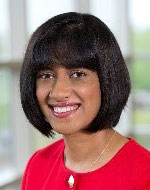 Bio: Asha Keddy is a Fortune 50 Senior Executive and visionary leader with 20+ years of experience in driving the future through technology and products while delivering pioneering strategies and setting industry standards.
Bio: Asha Keddy is a Fortune 50 Senior Executive and visionary leader with 20+ years of experience in driving the future through technology and products while delivering pioneering strategies and setting industry standards.
Currently, Keddy serves as the 5G Executive Sponsor for Intel and is responsible for the engineering and development towards the company’s data-centric future in the next phase of 5G and beyond.
Keddy leads a global organization that enables new business verticals and applications – with major contributions in industry consortia, global standards, design and development of disruptive technologies, and product innovation. Her tenure at Intel includes trialing new capabilities with global ecosystem partners, key learnings from which have been influential in setting government and industry policy.
She is a highly sought-after thought leader with over 200 speakerships and media appearances and multiple US Senate testimonies as a 5G expert.
Andreas Molisch, Professor, University of Southern California
Title: Sub-THz Channels and Communications Systems for 6G
Abstract: Exploiting the frequency ranges above 6 GHz has become a hallmark of modern wireless systems. The use of 20-100 GHz spectrum was a key characteristic of 5G systems, and the 100-500 GHz frequency range will be an important component in 6G. This talk will first discuss the characteristics of wireless propagation channels in those frequency bands, reviewing the fundamentals, and then discussing our recent measurement results in outdoor environments, including ones in the larger than 100 GHz frequency range that show feasibility of high-rate data links at distances up to 100 m in both line-of-sight and many non-line-of-sight situations; yet at the same time these measurements also indicate that many common assumptions about such high-frequency channels, e.g., with respect to sparsity, might not hold under all circumstances. Based on the discussions of the channels, the talk will then investigate single- and multi-user capacity, signaling methods and transceiver structures that are especially suitable for ultra-high data rates at these high frequency bands.
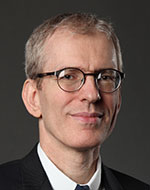 Bio: Andreas F. Molisch received his PhD and habilitation degrees from TU Vienna (Austria) in 1994 and 1999. After 10 years in industry, he joined the University of Southern California, where he is now the Solomon Golomb - Andrew and Erna Viterbi Chair. His research interest is wireless communications, in particular wireless propagation channel measurement and modeling, multi-antenna transceivers and systems, localization, wireless video distribution, mobile edge computing, and machine learning for wireless channels. He is the author of 4 books, 21 book chapters, 270 journal papers and numerous conference contributions, as well as 70 granted patents and numerous standards contributions. He is a Fellow of the National Academy of Inventors, IEEE, AAAS, and IET, Member of the Austrian Academy of Sciences, and recipient of numerous awards.
Bio: Andreas F. Molisch received his PhD and habilitation degrees from TU Vienna (Austria) in 1994 and 1999. After 10 years in industry, he joined the University of Southern California, where he is now the Solomon Golomb - Andrew and Erna Viterbi Chair. His research interest is wireless communications, in particular wireless propagation channel measurement and modeling, multi-antenna transceivers and systems, localization, wireless video distribution, mobile edge computing, and machine learning for wireless channels. He is the author of 4 books, 21 book chapters, 270 journal papers and numerous conference contributions, as well as 70 granted patents and numerous standards contributions. He is a Fellow of the National Academy of Inventors, IEEE, AAAS, and IET, Member of the Austrian Academy of Sciences, and recipient of numerous awards.
Radia Perlman, Fellow at Dell EMC
Title: How to Build an Insecure System Using Perfectly Good Cryptography
Abstract: Security issues in Internet communication tend not to be subtle mathematical flaws in the cryptography, but instead, broader system issues. For example, humans using the Internet. We have lovely cryptography. We have certificates. We have great protocols for doing authentication. But does that really assure a human that they are talking to what they think they are talking to? What about authenticating people? What kinds of names should people have, so that the name is unique, and someone that wants to talk to a human will know what name to use? What about distributed systems that are provably correct, provided that all the components are doing what they are supposed to be doing, but do not work correctly if some components misbehave? How can we design systems that will be robust despite misbehaving participants? Will digital signatures on data assure us that data that we read on the Internet is true? Is the simple answer to everything that we should blame users if things go wrong, and just complain that users need more training? (hint…no) Or maybe using blockchain everywhere will make everything secure? (hint…no)
 Bio: Radia Perlman is a Fellow at Dell EMC. Her specialties include network routing protocols, and network security. She developed the technology for making network routing self-stabilizing, largely self-managing, and scalable. She also invented the spanning tree algorithm, which transformed Ethernet from a technology that supported a few hundred nodes within a single building, to something that could support large networks. She also has made contributions in network security, including scalable data expiration, distributed algorithms despite malicious participants, DDOS prevention techniques, and user authentication. She is the author of the textbook “Interconnections” (about network layers 2 and 3) and coauthor of “Network Security”. She has been recognized with many industry honors including induction into the National Academy of Engineering, the Inventor Hall of Fame, The Internet Hall of Fame, Washington State Academy of Science, and lifetime achievement awards from Usenix and SIGCOMM. She has a PhD in computer science from MIT.
Bio: Radia Perlman is a Fellow at Dell EMC. Her specialties include network routing protocols, and network security. She developed the technology for making network routing self-stabilizing, largely self-managing, and scalable. She also invented the spanning tree algorithm, which transformed Ethernet from a technology that supported a few hundred nodes within a single building, to something that could support large networks. She also has made contributions in network security, including scalable data expiration, distributed algorithms despite malicious participants, DDOS prevention techniques, and user authentication. She is the author of the textbook “Interconnections” (about network layers 2 and 3) and coauthor of “Network Security”. She has been recognized with many industry honors including induction into the National Academy of Engineering, the Inventor Hall of Fame, The Internet Hall of Fame, Washington State Academy of Science, and lifetime achievement awards from Usenix and SIGCOMM. She has a PhD in computer science from MIT.
Ananthapadmanabhan Kandhadai, Qualcomm Technologies Inc.
Title: Making AR ubiquitous: Systems-level optimizations for always-on, always-connected experiences
Abstract: Augmented reality user experiences are becoming more available to consumers through a diverse set of devices of various form factors like headsup displays, holographic displays, head mounted devices, and handheld devices. Today, nearly 80% of the world's population uses the compute power and connectivity on their smartphone to access the internet and connect to their network of people and things any time of the day, anywhere in the world. AR and spatial compute technology offer the possibility for users to be presented with additional information of the world (places, things, life) around them proactively without an explicit directed human query. In particular, the possible evolution of optical glasses worn by humans to include AR has the potential of eventually becoming a device of choice by majority users to be their source of infotainment, social connection, education, economy, health and other needs. While there are many issues to be solved to make this potential a reality, in this talk, we will go through some considerations and challenges to be met by technologists to make AR glasses a platform for users to enjoy AR experiences ubiquitously. We will explore various system-level optimizations that need to be done to deliver an intuitive, immersive, always-on AR experience everywhere. These system-level optimizations would include power consumption considerations on the AR glasses plus the connections to any companion devices on person and to the cloud where ultimately most of the information needed by the user lies.
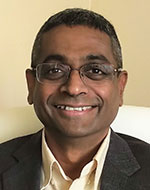 Bio: Ananth Kandhadai is a Senior Director, Engineering in the Multimedia R&D group in Qualcomm Technologies Inc. His research interests include AR/VR system solutions, Power constrained system design, Vision hardware acceleration, Model based techniques as well as Deep Learning for Computer Vision, Speech coding and enhancement, Image processing for cameras. He has over two decades of experience working on speech codec standardization, camera system design, computer vision, and XR, involving fundamental research as well as commercial implementation. He currently leads XR research and development for Qualcomm including technology roadmap, use-cases, algorithms, system design, architecture, hardware, software development, and customer product delivery.
Bio: Ananth Kandhadai is a Senior Director, Engineering in the Multimedia R&D group in Qualcomm Technologies Inc. His research interests include AR/VR system solutions, Power constrained system design, Vision hardware acceleration, Model based techniques as well as Deep Learning for Computer Vision, Speech coding and enhancement, Image processing for cameras. He has over two decades of experience working on speech codec standardization, camera system design, computer vision, and XR, involving fundamental research as well as commercial implementation. He currently leads XR research and development for Qualcomm including technology roadmap, use-cases, algorithms, system design, architecture, hardware, software development, and customer product delivery.



